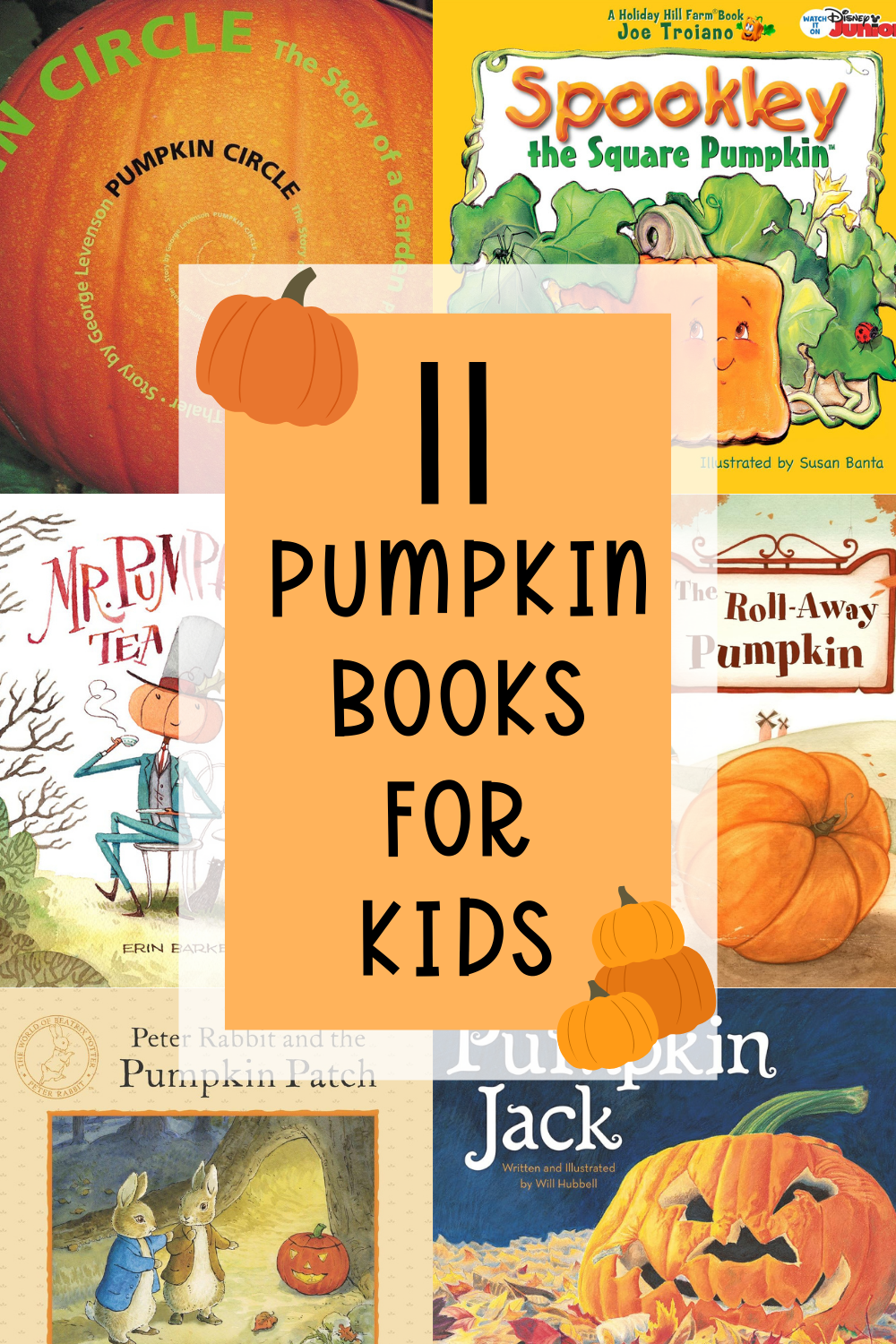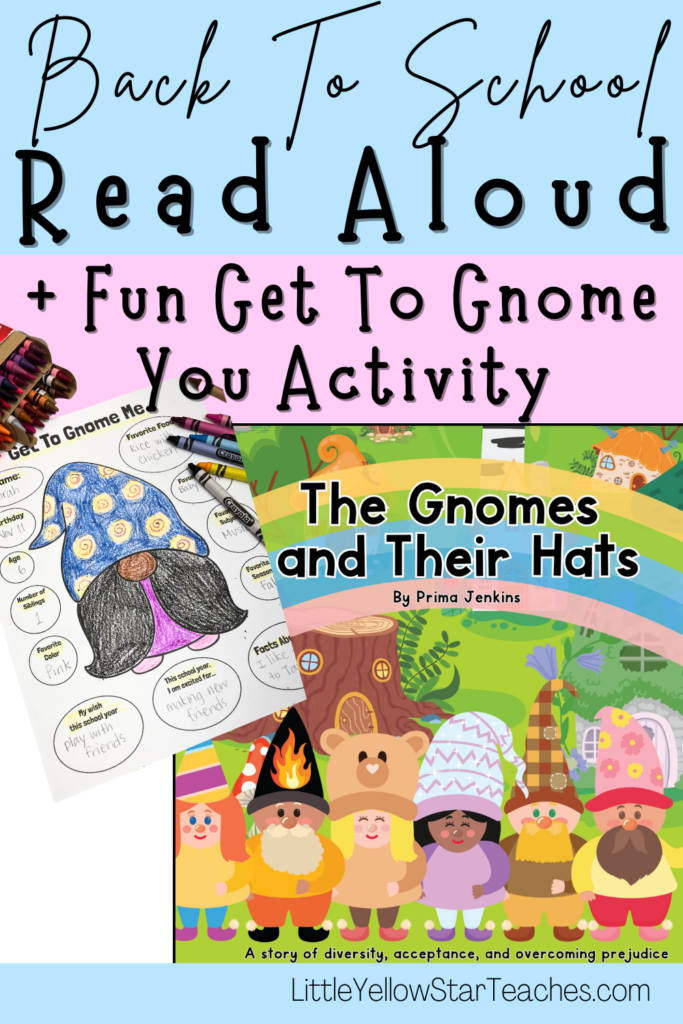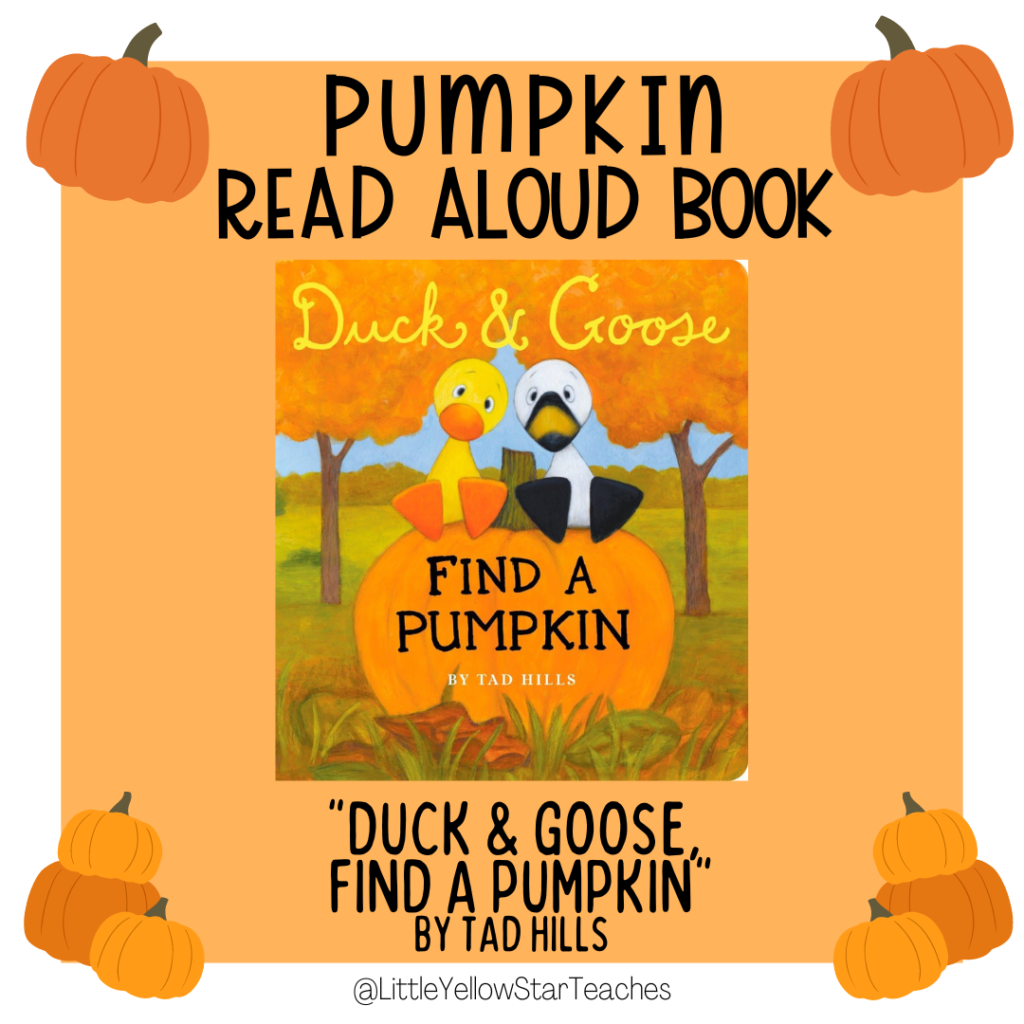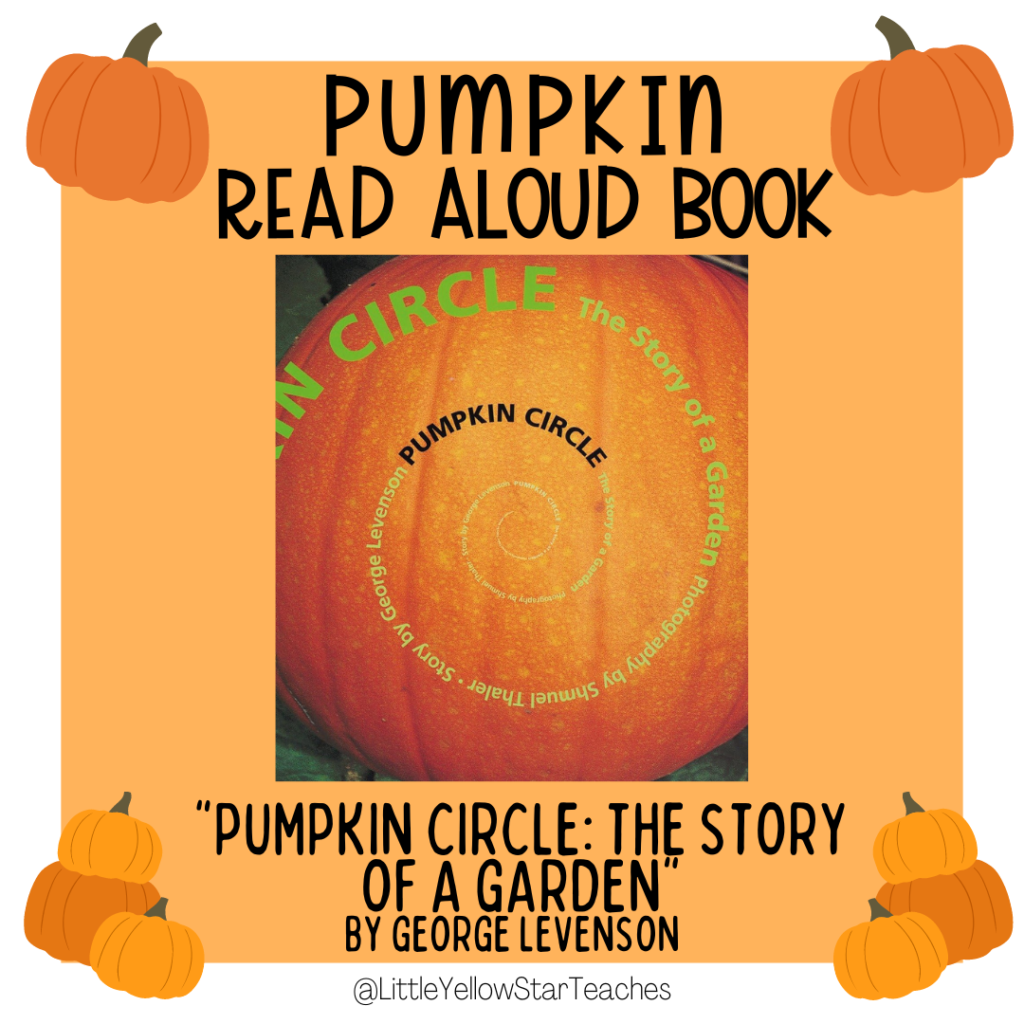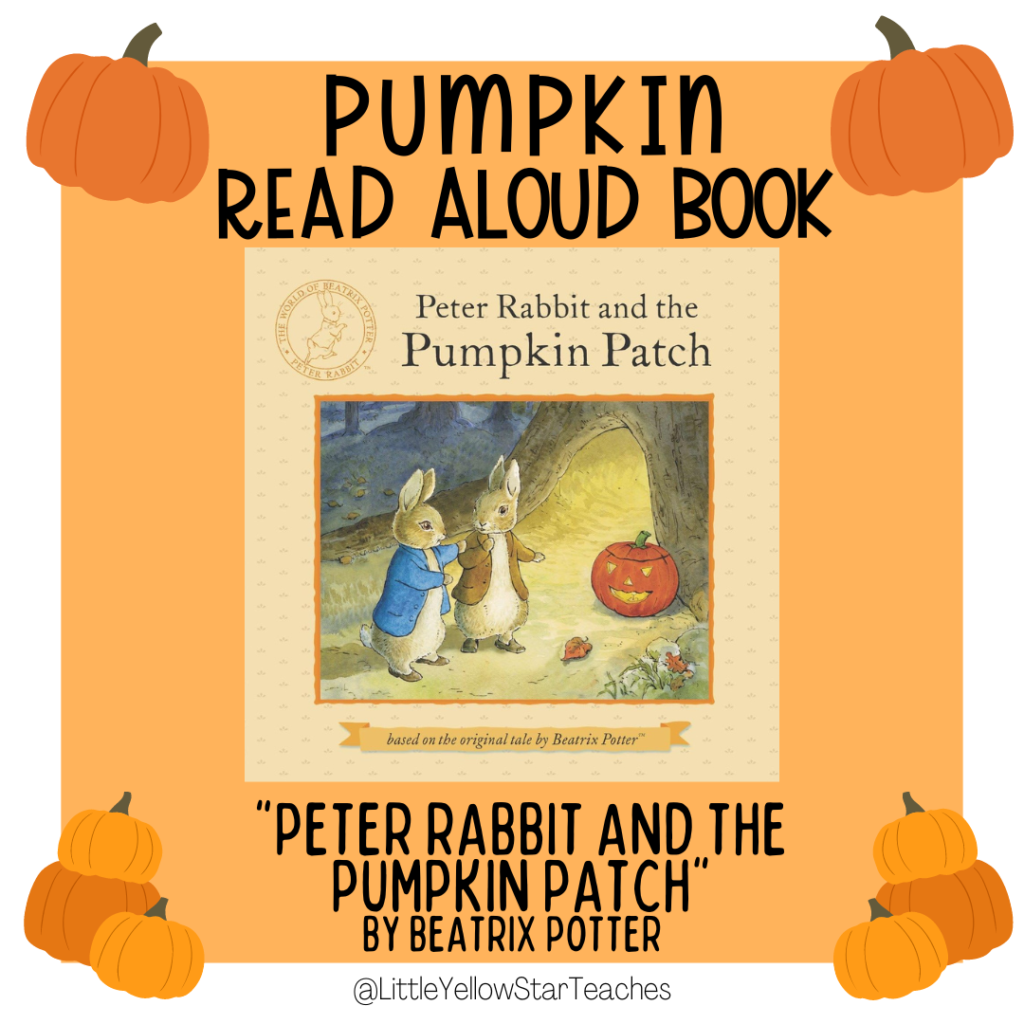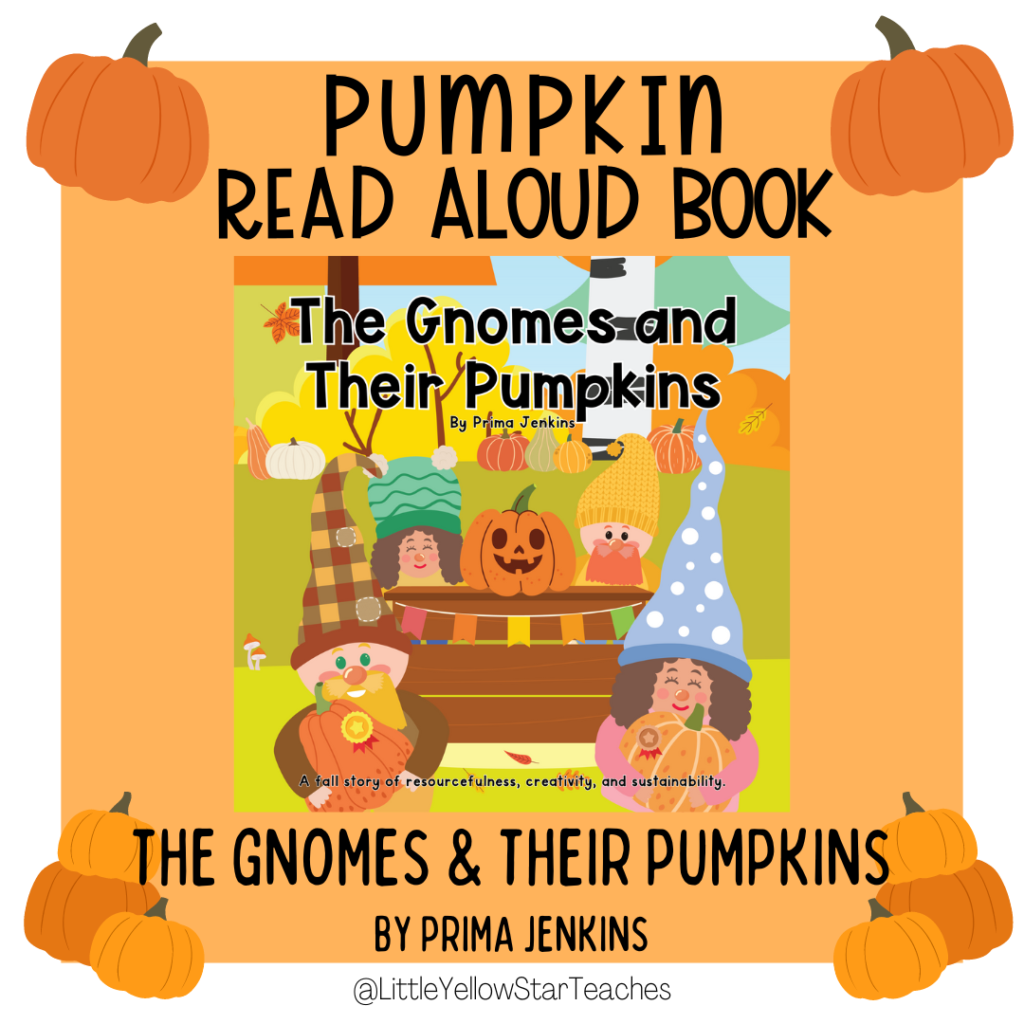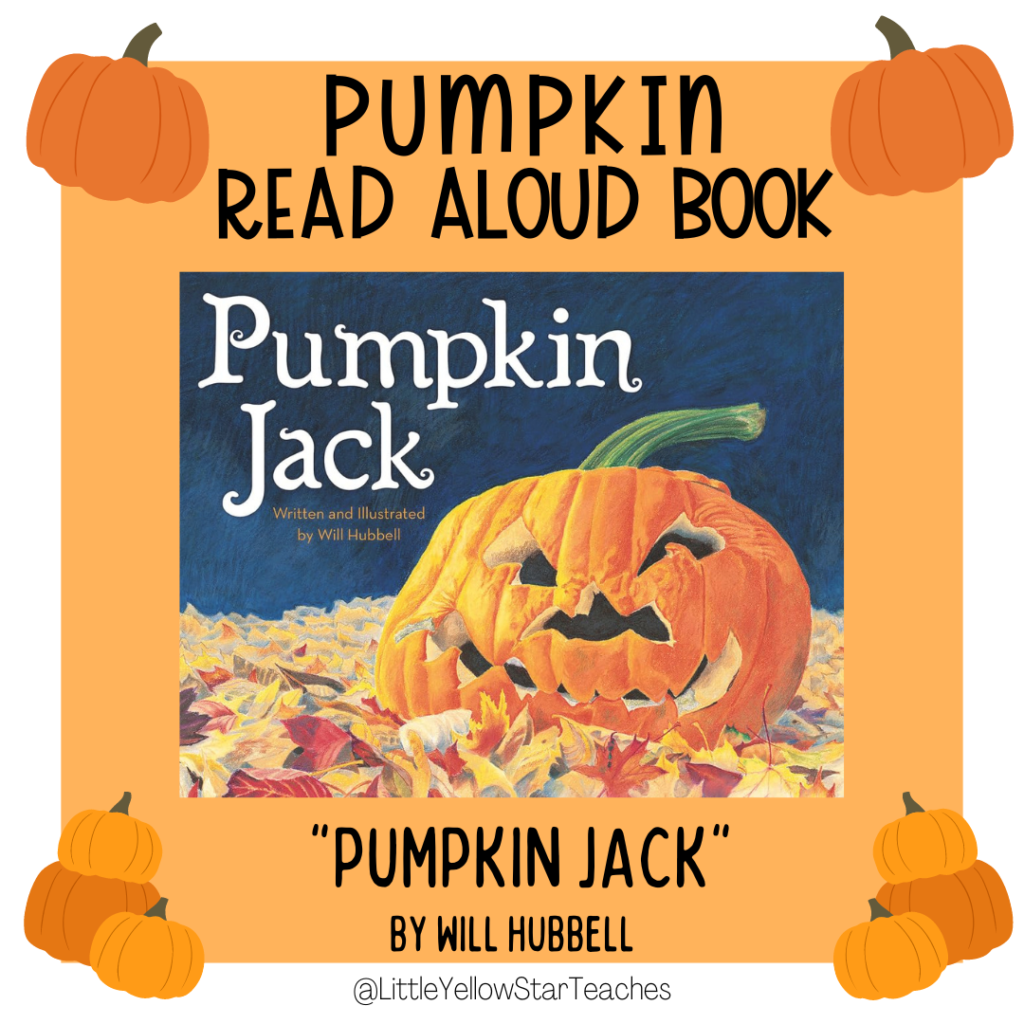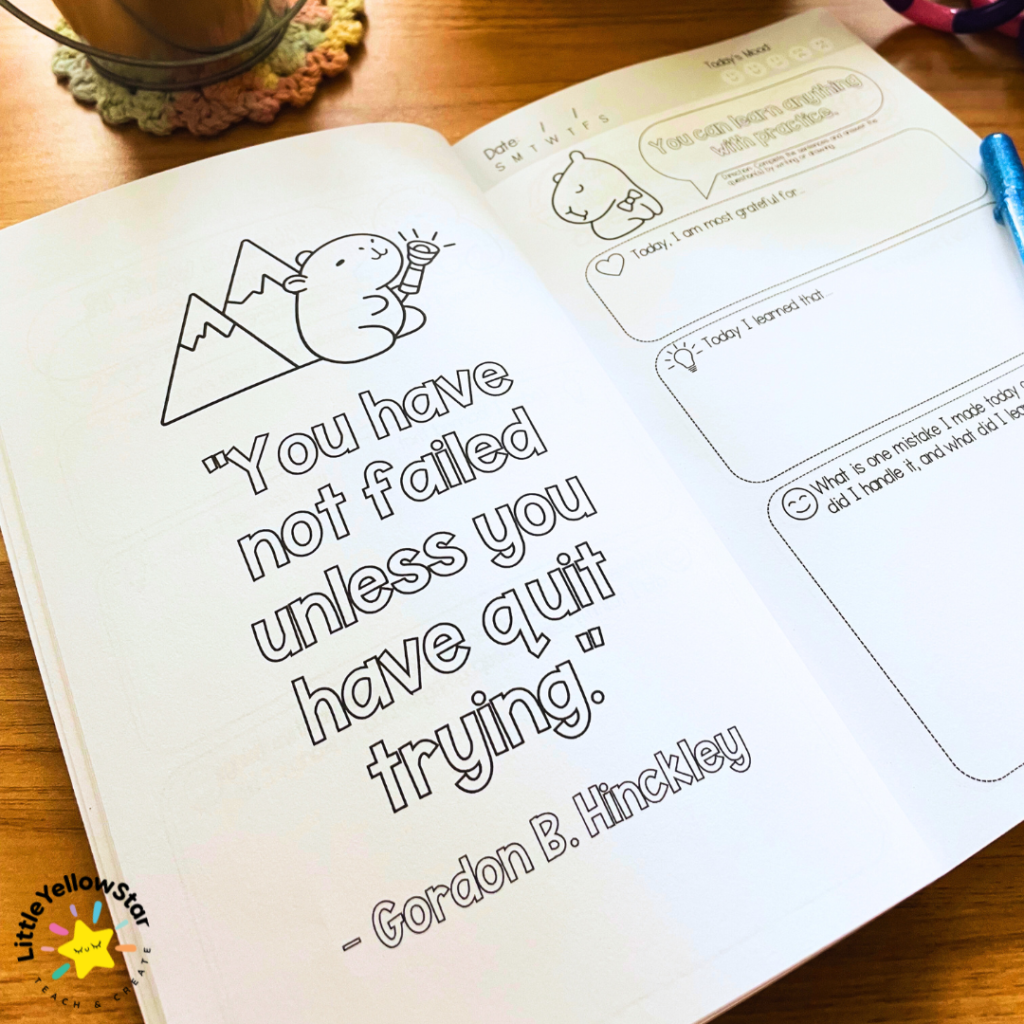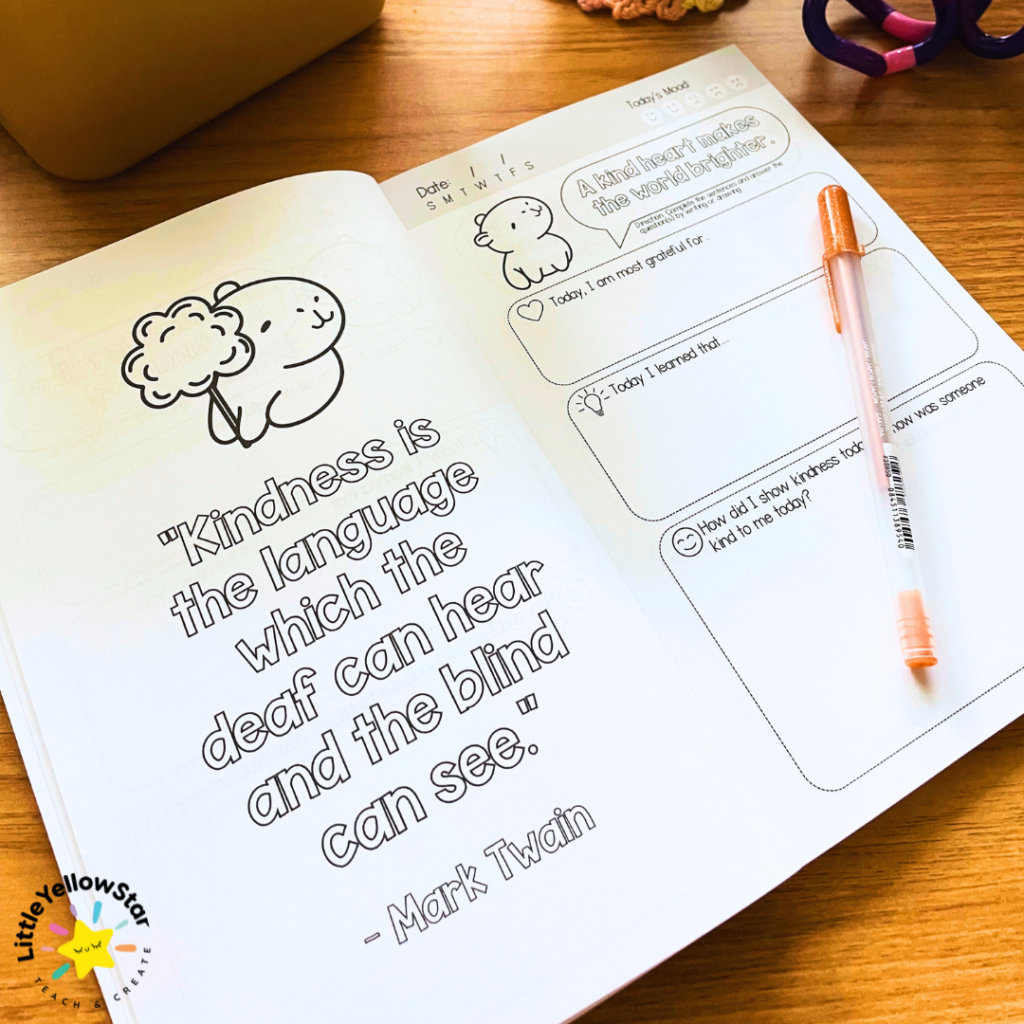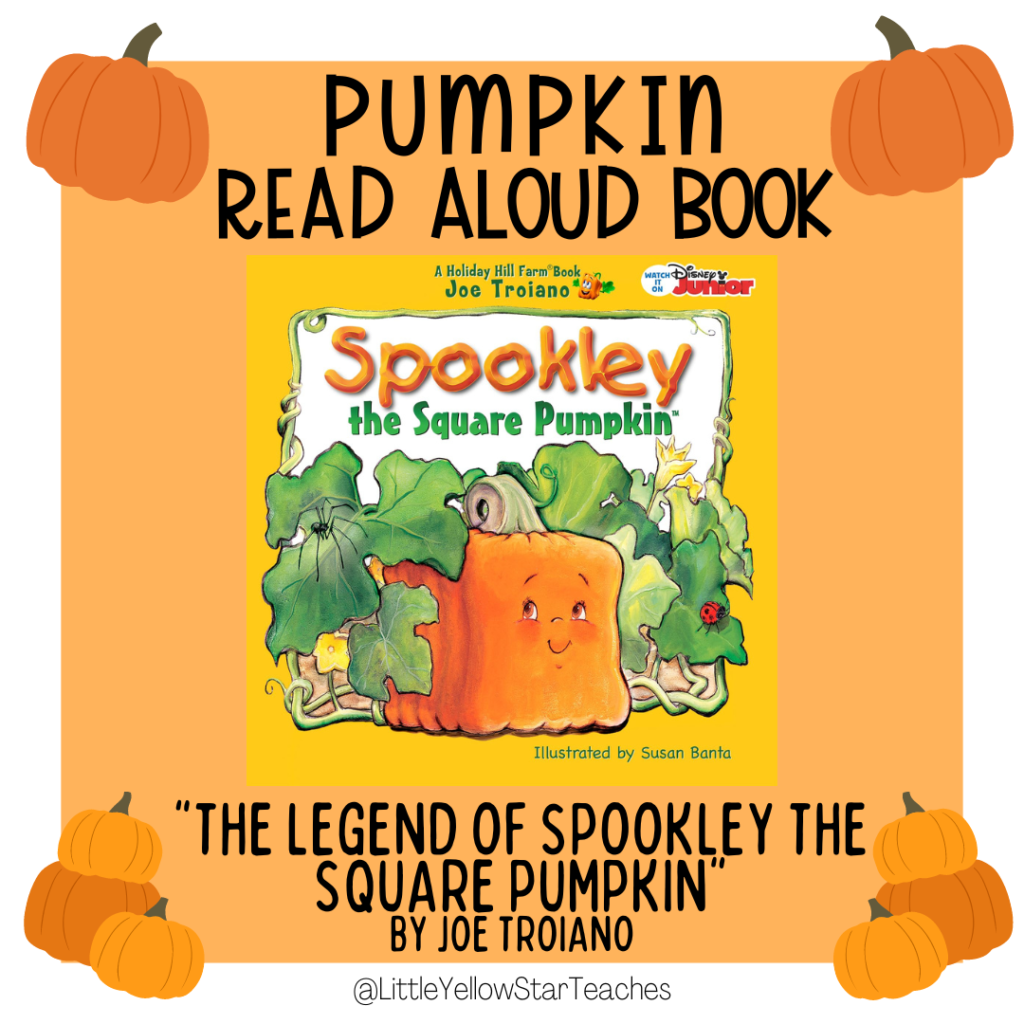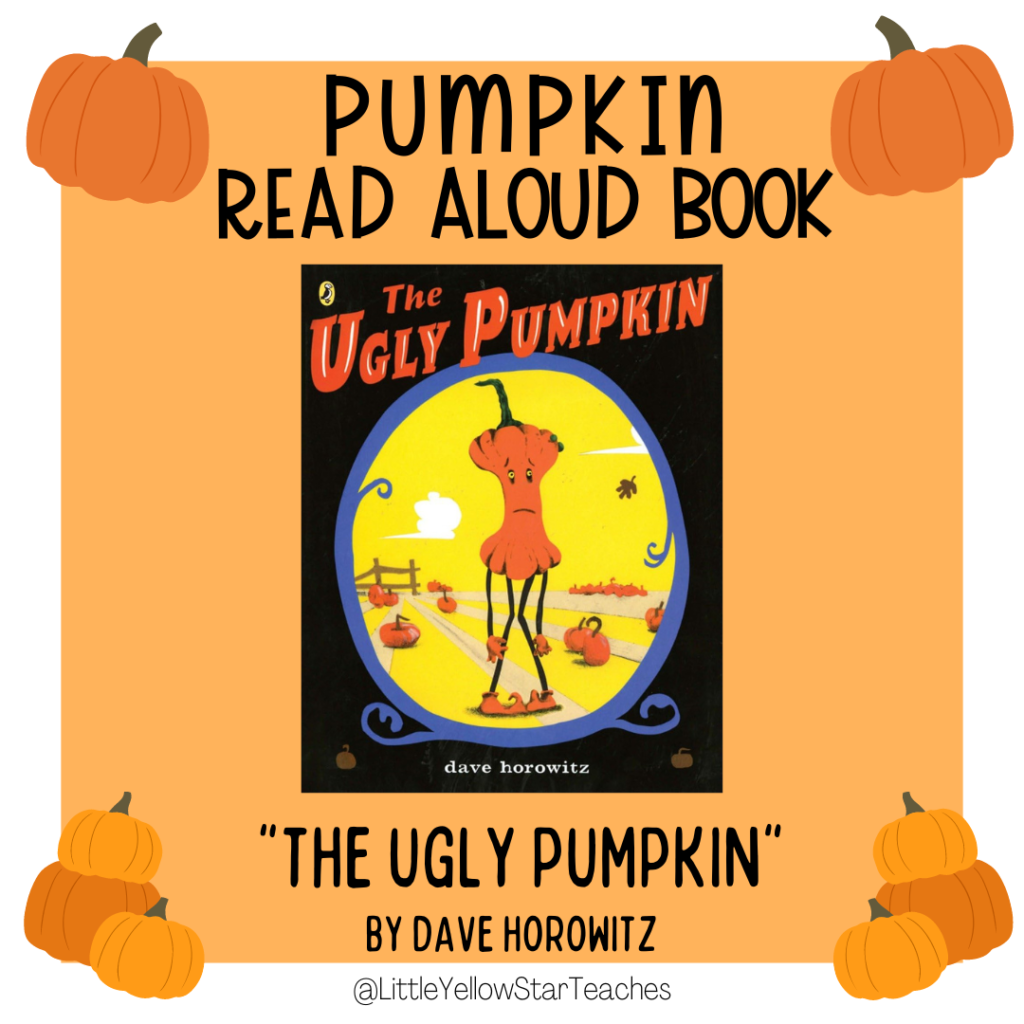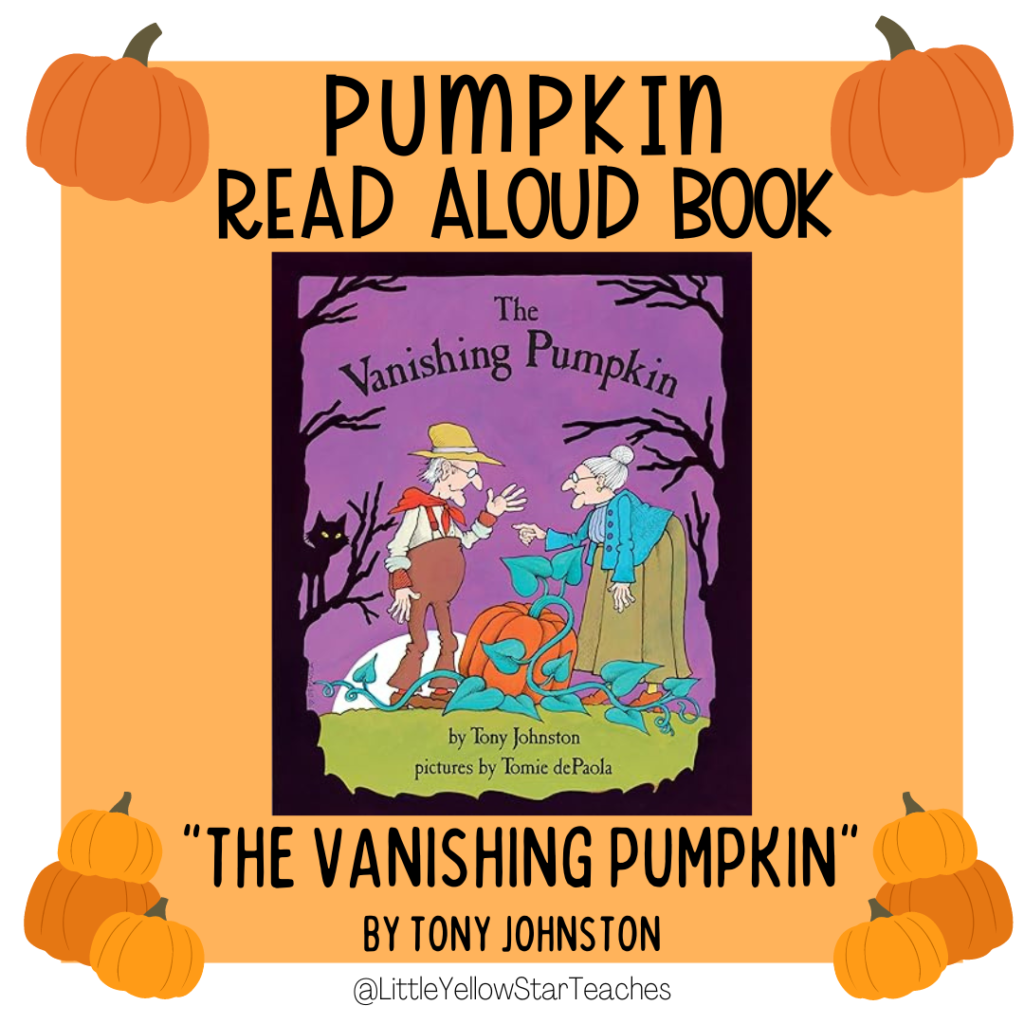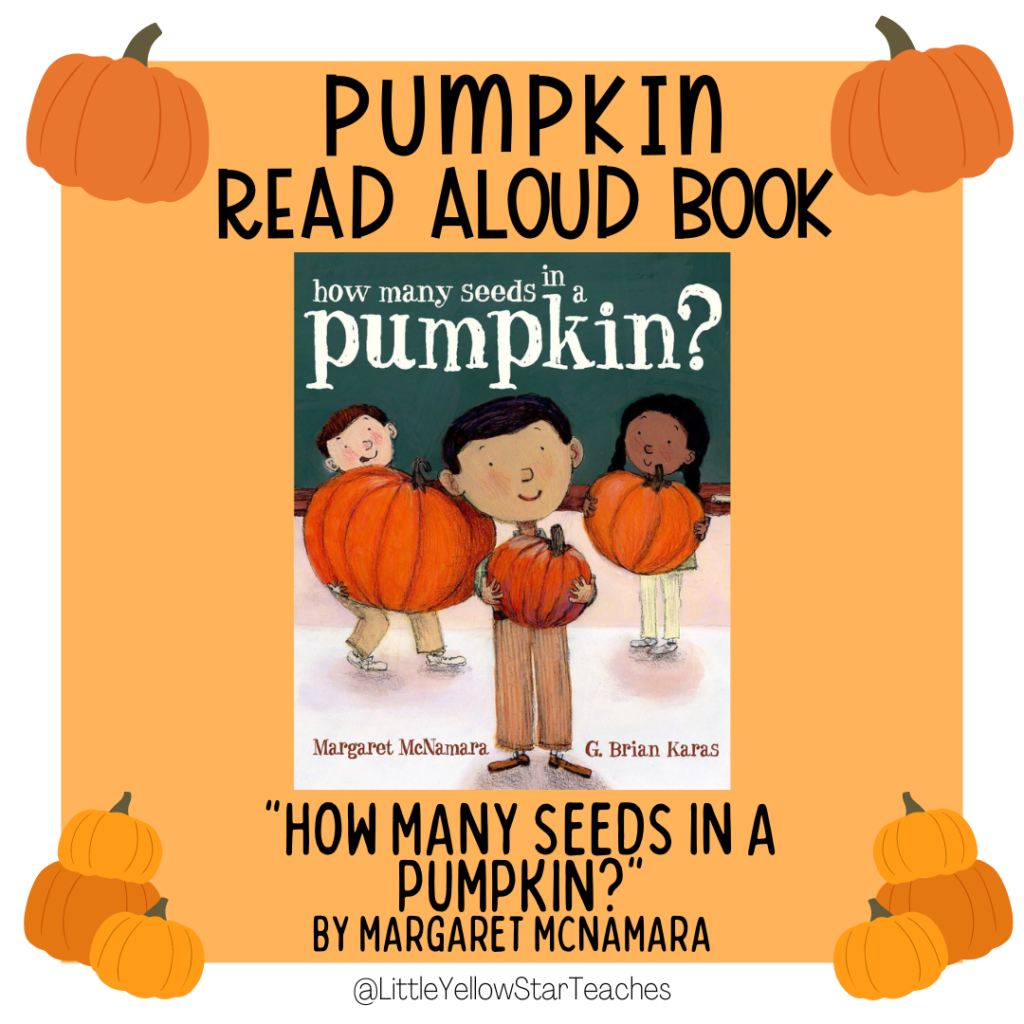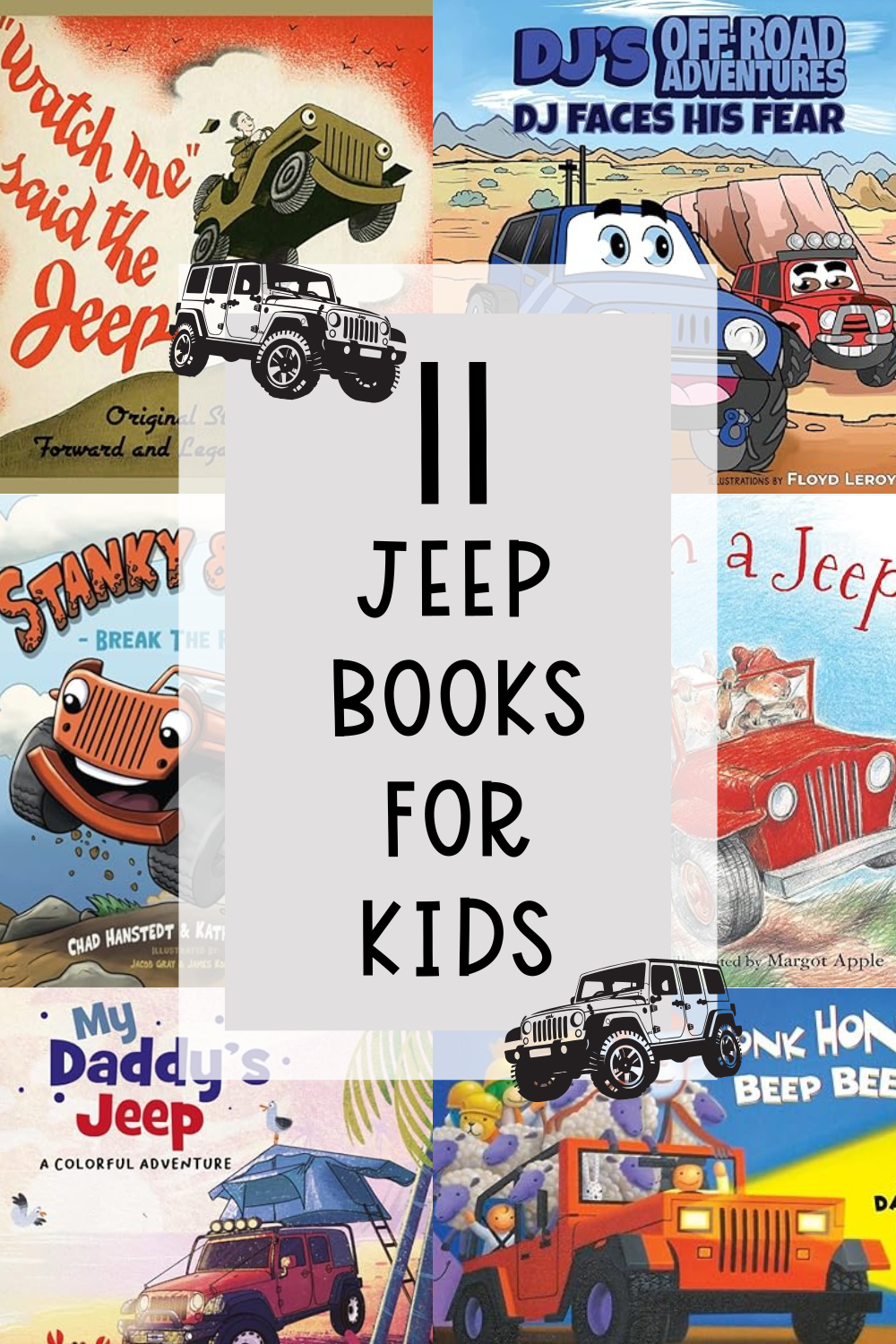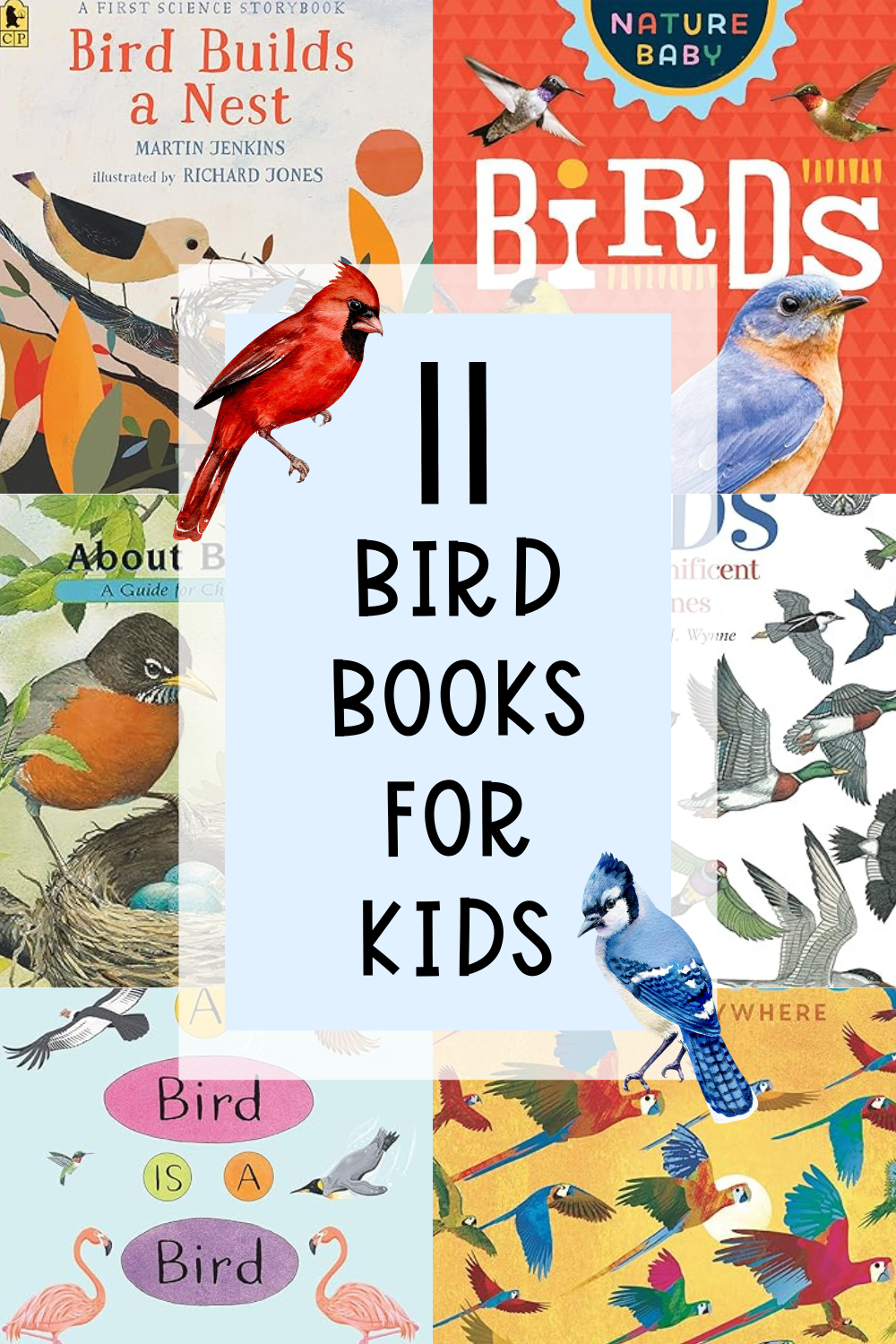***Disclosure: This post contains an Amazon affiliate link that at no additional cost to you, I may earn a small commission when you purchase through the link from my blog. Thank you for your support!
As a teacher and parent, I’ve seen how seasonal stories can capture a child’s imagination while teaching important lessons. Pumpkin-themed books are perfect for exploring the magic of fall and nature, all while offering engaging stories that children love.
In this post, I’ll share my top picks for pumpkin books across different age groups, along with activity ideas and discussion questions to enhance your storytime experience. Don’t forget to share which book(s) you and your children enjoy the most!
Table of Content
- Why Read Books About Pumpkins?
- The Role of Books in Teaching Kids about Pumpkins
- 11 Pumpkin Books For Children
- What Pumpkin Book(s) Are You Going To Read Later?
Why Read Books About Pumpkins?
Pumpkin books are not just fun seasonal reads; they introduce children to important concepts like growth, patience, and the cycles of nature. By following the life of a pumpkin—from seed to harvest—children gain a deeper understanding of the changing seasons and the significance of traditions like Halloween and harvest festivals. These stories can also nurture creativity and spark interest in gardening, crafts, and fall activities.
The Role of Books in Teaching Kids about Pumpkins
Books about pumpkins offer children more than just colorful illustrations and fun stories. They serve as educational tools, teaching children about plant life cycles, environmental changes, and even cultural celebrations. Through these stories, children can see the hard work that goes into growing a pumpkin, understand the importance of teamwork during the harvest, and connect with the natural world in a hands-on way. Characters in these books often model perseverance and collaboration, qualities children can apply to their own lives.
How to Use Books about Pumpkins with Children
Here are a few ways to make pumpkin-themed stories even more engaging for children:
- Ask Open-Ended Questions: After reading, ask children to think about how pumpkins grow or what their favorite pumpkin activity is. You could also have them imagine what they’d do with a giant pumpkin. If you’re in a classroom, try Turn and Talk to encourage group discussions.
- Reinforce Concepts with Activities: Extend the lesson by planting pumpkin seeds or creating pumpkin crafts. You can also bake pumpkin-themed treats like muffins or pies after reading a story about a pumpkin harvest.
- Refer Back to the Books: Use the stories as a reference point when pumpkins are seen in real life or during seasonal celebrations. Whether you’re visiting a pumpkin patch or carving a pumpkin for Halloween, relate it to the characters and experiences in the books.
- Involve Other Caregivers: Share these stories and activities with grandparents, babysitters, or other teachers. By involving everyone in the seasonal fun, children are more likely to retain and deepen their learning.
11 Pumpkin Books For Children
Younger Children (Ages 3-6)
#1 “Duck & Goose, Find a Pumpkin” by Tad Hills
Duck and Goose, the beloved characters, are on an adventure to find a pumpkin. Throughout their journey, they explore various places like a log, a tree, and even the water. The book is perfect for young readers and teaches valuable lessons about patience, exploration, and teamwork.
The book emphasizes curiosity, persistence, and the joy of friendship. It’s a simple, engaging read that encourages children to explore their environment and collaborate with friends to achieve common goals. The playful illustrations enhance the lighthearted narrative, making it a delightful seasonal read for young children.
- Activity Idea:
- Draw Your Own Pumpkin Adventure: Have children draw their own versions of where they might search for a pumpkin. This can be a tree, under a chair, or even inside a book!
- Questions To Ask:
- Where are some places Duck and Goose looked for a pumpkin?
- Why do you think it took them so long to find the pumpkin?
- How did Duck and Goose work together in their pumpkin search?
#2 “Pumpkin Circle: The Story of a Garden” by George Levenson
“Pumpkin Circle” explores the life cycle of a pumpkin from seed to harvest. With vibrant photographs and rhythmic text, this book beautifully illustrates the growth of a pumpkin, making it a perfect educational resource for young readers.
This book focuses on the themes of nature, life cycles, and patience. It introduces children to gardening and the seasons, teaching them about the wonders of plant life and how nature works in cycles. The realistic images further engage readers by showing the beauty of nature.
- Activity Idea:
- Life Cycle Art: Create a life cycle poster showing the stages from seed to pumpkin, encouraging children to illustrate each phase.
- Questions To Ask:
- What does a pumpkin start as before it grows?
- What are the stages of a pumpkin’s life cycle?
- How long does it take for a pumpkin to grow?
#3 “Peter Rabbit and the Pumpkin Patch” by Beatrix Potter
In this autumnal tale, Peter Rabbit discovers a pumpkin patch while exploring Mr. McGregor’s garden. The story highlights Peter’s mischievous nature and the consequences of sneaking into forbidden areas, with pumpkins playing a central role.
The book teaches lessons about boundaries, responsibility, and curiosity. Peter’s adventure in the pumpkin patch is a playful reminder to children about understanding limits and the fun of exploration, while reinforcing the classic moral themes of Beatrix Potter’s tales.
- Activity Idea:
- Character Role Play: Act out the scenes where Peter Rabbit sneaks into the pumpkin patch, focusing on what happens when you break rules.
- Questions To Ask:
- Why does Peter Rabbit go into the pumpkin patch?
- What do you think Peter learned from sneaking into the garden?
- What are some rules you think Peter should follow in the garden?
Lower Elementary Children (Ages 7-9)
#4 “The Gnomes and Their Pumpkins” by Prima Jenkins
In The Gnomes and Their Pumpkins, a group of gnomes face a common autumn dilemma: what to do with all the pumpkins they’ve grown after their big pumpkin contest. As they brainstorm different uses for the pumpkins, the story highlights their creativity, teamwork, and the joy of finding practical and fun solutions. This charming tale is filled with whimsical illustrations and teaches children about resourcefulness, collaboration, and the fun of harvest time.
The book emphasizes themes of problem-solving, community, and seasonal traditions. I was inspired to write and create this book to encourage children to think creatively about how to use resources and emphasize that working together as a team can lead to fantastic ideas. The focus on pumpkins ties the story to autumn and harvest traditions, making it an ideal read for fall. The gnomes’ journey also teaches children about making the best out of abundance rather than wasting resources.
- Activity Idea:
- Pumpkin Brainstorm: After reading the story, have children come up with their own creative ways to use pumpkins. They can draw their ideas or write about them, just like the gnomes in the story.
- Questions To Ask:
- How did the gnomes work together to solve their pumpkin problem?
- What are some creative ways the gnomes found to use their pumpkins?
- Why is it important to use what we have instead of letting it go to waste?
#5 “Pumpkin Jack” by Will Hubbell
“Pumpkin Jack” tells the story of a boy who watches his carved pumpkin slowly decay after Halloween, eventually turning into compost that helps grow a new pumpkin in the spring. This beautifully illustrated story teaches about the life cycle of a pumpkin.
This book presents themes of transformation, renewal, and the cycles of nature. It highlights how even something as simple as a decaying pumpkin plays a role in nature’s endless cycle of life, making it a wonderful introduction to composting and regeneration.
- Activity Idea:
- Pumpkin Decay Experiment: Observe a real pumpkin as it decomposes over time, discussing what happens and how it changes.
- Questions To Ask:
- What happens to Jack after Halloween?
- How does Jack help new pumpkins grow?
- What is compost, and how is it useful?
#6 “Pick a Pumpkin” by Patricia Toht
This joyful celebration of picking, carving, and decorating pumpkins captures the excitement of fall traditions. The rhythmic text and rich illustrations guide readers through the process of choosing a pumpkin, bringing it home, and turning it into a jack-o’-lantern.
The book highlights the joy of seasonal traditions, family activities, and creativity. It captures the excitement of preparing for fall festivities, making it perfect for children eager to participate in the annual pumpkin traditions.
- Activity Idea:
- Pumpkin Picking Trip: If possible, take kids to a pumpkin patch to pick their own pumpkin, just like in the story.
- Questions To Ask:
- What’s your favorite part of picking a pumpkin?
- How does the book make you feel about fall traditions?
- What are some fun ways to decorate a pumpkin?
Check Out Capybara-Theme Daily Reflection Journals For Kids!
#7 “The Roll-Away Pumpkin” by Junia Wonders
In this fun and fast-paced story, a giant pumpkin starts rolling away, and a little girl named Marla chases it through the town. As Marla follows the pumpkin, various townspeople join in to help, creating an exciting adventure that ends in a festive gathering.
The book focuses on themes of community, teamwork, and problem-solving. As Marla chases the pumpkin, she enlists the help of others, showing the power of collaboration and quick thinking in resolving unexpected challenges.
- Activity Idea:
- Pumpkin Roll Race: Organize a playful outdoor game where children roll pumpkins (or balls) down a hill, mimicking Marla’s adventure.
- Questions To Ask:
- Why did the pumpkin roll away, and how did Marla try to stop it?
- How did the townspeople help Marla chase the pumpkin?
- What do you think would happen if the pumpkin kept rolling?
Upper Elementary Children (Ages 9-11)
#8 “The Legend of Spookley the Square Pumpkin” by Joe Troiano
In this heartwarming story, Spookley is a square pumpkin living in a patch full of round pumpkins. When a storm threatens the pumpkin patch, Spookley’s unique shape helps save the day. This story promotes themes of diversity and acceptance.
The book emphasizes the importance of embracing differences and being proud of who you are. Spookley’s square shape, initially seen as odd, becomes an asset, showing that our differences make us special and valuable. It’s a perfect read for teaching diversity and self-acceptance.
- Activity Idea:
- Square Pumpkin Craft: Have children make their own square pumpkins out of construction paper, highlighting how being different is special.
- Questions To Ask:
- How is Spookley different from the other pumpkins?
- Why is it important to be proud of our differences?
- How did Spookley save the day during the storm?
#9 “The Ugly Pumpkin” by Dave Horowitz
This clever twist on “The Ugly Duckling” follows an oddly-shaped pumpkin who feels out of place among the other pumpkins. However, by the end of the story, the Ugly Pumpkin discovers he is not a pumpkin at all, but a squash, just in time for Thanksgiving.
The book touches on themes of identity, self-discovery, and belonging. It teaches children that everyone has a place where they belong, even if they don’t fit in at first. The humorous ending, where the Ugly Pumpkin finds his true identity as a squash, reinforces the idea that it’s okay to be different.
- Activity Idea:
- Pumpkin vs. Squash Exploration: Bring in different pumpkins and squash varieties and have children compare and contrast them, helping them see that both are valuable.
- Questions To Ask:
- Why did the Ugly Pumpkin feel like he didn’t belong?
- How did the Ugly Pumpkin feel when he discovered he was a squash?
- What lesson did you learn from the Ugly Pumpkin’s journey?
#10 “The Vanishing Pumpkin” by Tony Johnston
This humorous Halloween tale follows an elderly couple whose pumpkin mysteriously vanishes. They search the countryside for their missing pumpkin, meeting strange and magical creatures along the way. It’s a delightful, slightly spooky story full of fun rhymes.
This book mixes adventure, mystery, and magic with a lighthearted tone. The theme of persistence shines through as the couple refuses to give up on finding their pumpkin. The rhyming text and whimsical illustrations create a spooky but fun reading experience perfect for Halloween.
- Activity Idea:
- Magical Creatures Drawing: Have children draw the magical creatures they think might have taken the pumpkin in their own version of the story.
- Questions To Ask:
- Who do you think took the pumpkin, and why?
- How did the old man and woman feel when their pumpkin vanished?
- What magical creatures did they meet along the way?
#11 “How Many Seeds in a Pumpkin?” by Margaret McNamara
In How Many Seeds in a Pumpkin?, Mr. Tiffin’s class explores pumpkins of different sizes, challenging the students to estimate how many seeds are inside each one. As they cut open the pumpkins and count the seeds, they learn that the smallest pumpkin surprisingly holds the most seeds. The story introduces children to concepts of estimation, multiplication, and the scientific method while also teaching that appearances can be deceiving—sometimes, the smallest things hold the biggest surprises.
The book emphasizes themes of curiosity, math, and nature. It encourages children to look beyond surface appearances and engage in critical thinking, while subtly reinforcing lessons in multiplication and estimation. The classroom setting makes it especially relevant for students learning math and science concepts, and it promotes teamwork as the students work together to count the seeds.
- Activity Idea:
- Pumpkin Seed Estimation Challenge: Bring in pumpkins of different sizes and have children estimate how many seeds are inside each one. Then, cut open the pumpkins and count the seeds together, comparing the results to their initial estimates.
- Questions To Ask:
- Why does the smallest pumpkin have the most seeds?
- How did Mr. Tiffin’s class work together to estimate and count the seeds?
- What did you learn about estimation and math from the book?
Grab these free resources to make your teaching life easier!
What Pumpkin Book(s) Are You Going To Read Later?
Pumpkin books for kids are a fun and educational way to explore the beauty of fall and the wonders of nature. Whether you’re reading about growing pumpkins, celebrating harvests, or going on pumpkin-themed adventures, these stories can create lasting memories while teaching important lessons.
I encourage you to pick a few of these pumpkin books and experience the joy they bring. Do you have a favorite pumpkin book? Let me know which one you’re planning to read by tagging me on Instagram @LittleYellowStarTeaches.
Happy reading!
Prima at LittleYellowStar
* * *

